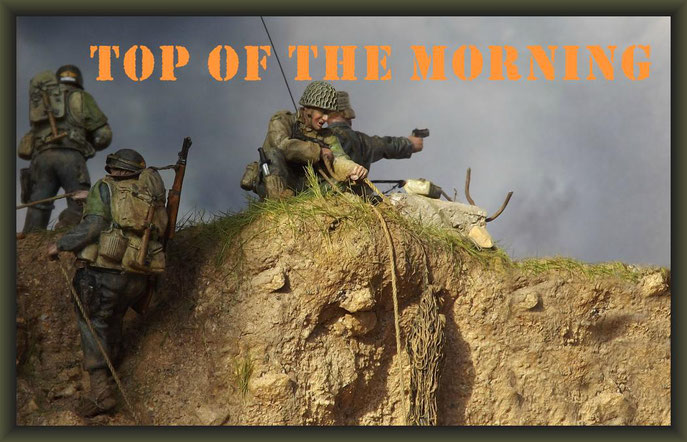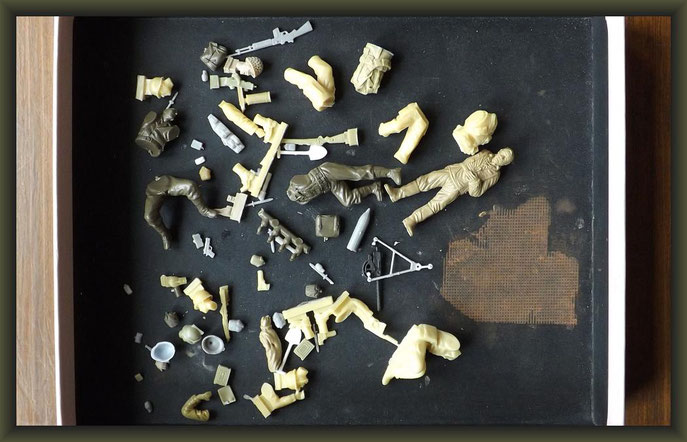Normandy Coast 1944
At 0709hrs on the 6th of June, a code word was picked up by the invasion fleet off the French coast.
"Crowbar" was 40 minutes behind schedule, but at least it meant that Lt Col Rudder's Force A
of the 2nd Ranger Battalion was finally in position, ready to carry out one of the most difficult tasks on this the "longest of days".
For the much reduced group of cold, wet and seasick assault troops there was just a mere 100ft to go. Not forward but skyward, up and up .... the daunting cliffs of the Pointe-du-Hoc.
This action has become legendary and controversial. The mission was necessary because of the threat of German artillery positions on it's crest, which overlooked the transport shipping areas off the Omaha and Utah beaches. Even though allied bombers and warships had reduced the area to a lunar landscape, the risk of anything firing down from this "highest point" was deemed to be too great.
Fighting on the clifftops was sporadic, some units meeting less resistance that others. The "rub" was, that the guns (French WW1 155mm GPF's) had been removed beforehand - casting some doubt on the raids necessity. Five were later found unguarded complete with ammo and destroyed by Ranger patrols using thermite grenades.
Mopping-up enemy concealed within the area, patrolling and facing German counterattacks saw this elite force whittled down from 200 to 90 at the dawning of D+1.
They were finally relieved around noon on D+2, by forces coming out of the Omaha beachhead.
I don't like playing out "What if" scenarios but I'll leave you to ponder this. What if the raid was called off and those guns were brought to bear on troopships ?
Completed: 06.06.'17
Pointe-du-Hoc
Vignette 1:35 / Building Stages:
Here's the figures and bits before the start.
The bits before priming/painting.
To my version of things. The first men to scale the cliffs were the best climbers, dubbed 'Top Monkey's', they were lightly armed with pistols and carbines. The officer is trying to get his wet SCR-536 to work while taking a pot shot (as best he can) at someone.
Many grapnel hooks did not find purchase and so one Ranger in his last moments has thrown himself on top of one, saving the lives of those still climbing the slippery rope. The Sgt and climbing figure are from the second wave and both wear assault vests, the latter the British made version.
Note gas masks/bags and British gas detector brassards being worn. It was feared that the enemy would use the stuff to repel the landings. The dead German could be from the 352.Infanterie-Division or the Grenadier Regiment.726.
Hauling up the line is a 'Top-Monkey', his 'catch' is a 60mm mortar - just the thing to 'winkle-out' the entrenched opposition.
The thing dangling precariously in it's wire basket, is an old French artillery projectile. These 'roller-mines' were hung over the cliff edges and were detonated by remote control or impact fuse. Fortunately only one went off with no casualties caused, the majority having been destroyed/displaced by the pre-assault bombardment which has also shattered many concrete bunkers in the area.
Exellent reference (and a damm good read) was provided by Osprey Publishing, the first from their Raid series.

So, that's it for this years D-Day project, and in answer to that old Irish greeting for a title,
I shall wish the rest of this 'Day of Days' to yourself.
 The
Gun Bucket
The
Gun Bucket


















































